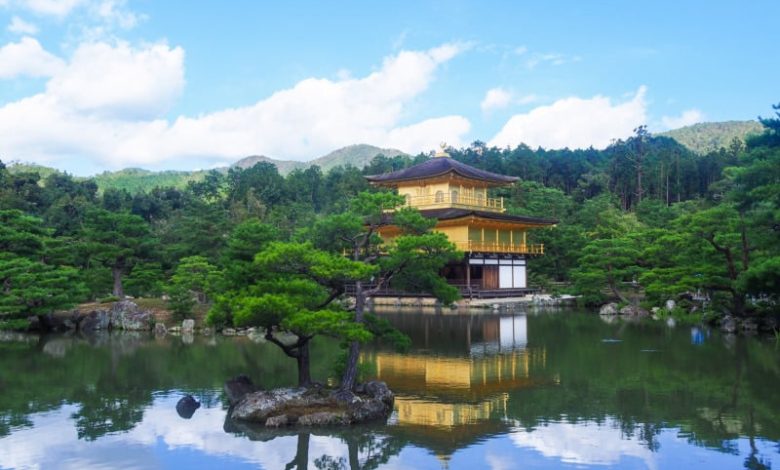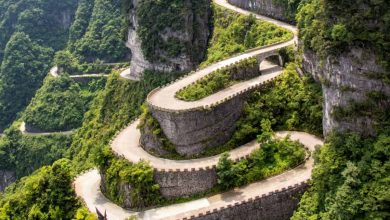Kinkaku-ji: cultural heritage profile

Diplomat.Today
Welcome to our comprehensive travel guide to visiting Kinkaku-ji, a destination known for its unique blend of cultural richness, history and educational value in Kyoto, Japan.
Here you will find detailed insights into what makes Kinkaku-ji such a unique cultural attraction.
About
Gallery
Details
Assessment of cultural heritage
Universal appeal and cultural authenticity
Cultural wealth and educational value
Conservation and integrity
Accessibility and visitor engagement
Overall rating: 4.5/5
- Universal appeal and cultural authenticity (90/100):
- Kinkaku-Ji is recognized worldwide as an iconic symbol of Japanese culture and Zen Buddhism.
- The fusion of Shinden, Samurai and Zen temple architecture and the Golden Pavilion create a culturally rich and authentic experience.
- The temple attracts several international visitors, adding to its universal appeal.
- Cultural wealth and educational value (75/100):
- Although the historical and architectural significance is enormous, educational engagement could be improved by offering more interactive elements and detailed information on the site.
- Guided tours and occasional cultural events provide valuable educational insights, but may not be sufficient given the enormous interest from visitors.
- Conservation and integrity (85/100):
- Kinkaku-Ji has been meticulously maintained and restored to preserve its historical authenticity and integrity.
- The efforts of various organizations ensure the protection and preservation of the temple for future generations.
- Despite heavy tourist traffic, the site retains its pristine and serene atmosphere, reflecting practical conservation efforts.
- Accessibility and visitor engagement (80/100):
- The entry and ticketing systems are very efficient and ensure a smooth flow of visitors, even during high season.
- However, the large crowds can sometimes detract from the overall visitor experience, making it challenging to fully appreciate the beauty and tranquility of the temple.
- The temple offers facilities and trails that are generally accessible, although more interactive and informative elements could increase engagement.
Historical importance
Kinkaku-Ji, officially called Rokuon-ji, is a Zen Buddhist temple in Kyoto, Japan. It was founded in 1397 by the third Ashikaga shogun, Yoshimitsu, as part of his private kitayama villa.
The temple is of great historical importance as it has survived several natural disasters and wars, reflecting the resilience of Japan’s cultural heritage.
- Kinkaku-ji has witnessed significant historical events and survived various natural and man-made challenges, reflecting the resilience of Japan’s cultural heritage.
- As a UNESCO World Heritage Site, Kinkaku-ji has enormous architectural and archaeological significance. It showcases the exquisite craftsmanship of Japanese temple construction.
- The temple’s existence and preservation contribute to the rich history of Kyoto and Japan and are a testament to the region’s lasting legacy.
- Notable historical figures, such as the shogun Ashikaga Yoshimitsu, are associated with Kinkaku-ji’s construction and legacy, adding to its historical importance.
Cultural importance
Kinkaku-Ji is a symbol of cultural and spiritual significance in Kyoto and beyond. It has influenced local traditions, arts and community activities by serving as a place for meditation and reflection. The architecture of the temple and surrounding gardens have inspired countless artists and writers and contributed to Japan’s rich cultural tapestry.
Global influence
- Kinkaku-ji is recognized worldwide as a symbol of Japanese architecture and Zen Buddhism, attracting visitors around the world.
- The temple receives significant international visitors annually, contributing to the tourism industry in Kyoto and Japan.
- Its stunning architecture and rich history have influenced global art and culture, inspiring diverse artistic representations and cultural references.
- Kinkaku-ji has been involved in international cultural exchange events and collaborations, promoting cross-cultural understanding and appreciation of Japanese heritage.
Architectural style
The architectural style of the temple combines Shinden, Samurai and Zen temple architecture. The top two floors are covered in gold leaf, exemplifying the extravagant architecture of the Muromachi period. The harmony between the pavilion and its natural environment, including the Mirror Pond, demonstrates the integration of nature into the design.
Conservation efforts
- Current conservation projects aim to preserve the structural integrity and historical authenticity of Kinkaku-ji, ensuring its survival for future generations.
- Organizations such as the Kyoto City Government and the Japan Cultural Affairs Agency are actively preserving and restoring Kinkaku-ji.
- Funding and support for conservation comes from a variety of sources, including government initiatives, private donations, and international heritage conservation programs.
- The local community actively participates in conservation efforts through volunteer programs, educational initiatives and raising awareness about the significance of Kinkaku-ji.
Visitor experience
Visitors to Kinkaku-Ji can expect a serene and contemplative atmosphere. Tours provide insight into the history and significance of the temple. The temple occasionally hosts special exhibitions and cultural events, giving visitors a deeper insight into Japanese traditions and spirituality.
Kinkaku-Ji is accessible to various groups, including families and people with disabilities. The temple offers restrooms, souvenir shops, and serene rest areas. The surrounding trails are generally well maintained, making it easy to navigate.
Photographic possibilities
The Golden Pavilion and its reflection in the Mirror Pond offer stunning photographic opportunities. The changing seasons offer different perspectives, with cherry blossoms in spring and vibrant leaves in autumn creating picturesque scenes. Early morning light and late afternoon sun are recommended to capture the golden glow of the pavilion against the tranquil water.
Best time to visit
- Avoid peak hours: To avoid the biggest crowds and experience a quieter visit, try to arrive just as the temple opens at 9 AM or during the last hour before closing at 5 PM. This strategy helps bypass the bulk of tour groups and casual visitors who typically arrive around midday.
- Seasonal highlights: The scenic beauty of Kinkaku-Ji is exceptionally vibrant during the cherry blossom season in early April and the colorful autumn leaves in late November. These times offer breathtaking views, but also consider off-peak periods, such as early spring or late fall, for a good balance of beautiful scenery and fewer visitors.
- Weather Considerations: Although the temple is picturesque all year round, visiting on a clear, sunny day allows the golden pavilion to shine brightly against the blue sky, enhancing photo opportunities and the overall experience. Light rain can also add a mystical element to the gardens, making the temple less crowded under these conditions.
Ratings and reviews
Kinkaku-Ji has received much praise for its breathtaking beauty and historical significance. Visitors often praise the serene atmosphere and well-preserved architecture. However, some reviewers note that the site can be busy during peak season. Compared to similar attractions, Kinkaku-Ji stands out for its unique combination of natural and architectural beauty.



